With their piercing eyes, powerful talons, and majestic flight patterns, birds of prey represent some of nature’s most stunning creations. These aerial hunters combine deadly precision with remarkable beauty, capturing the imagination of wildlife enthusiasts worldwide. From the snow-capped mountains of the Himalayas to the dense rainforests of South America, raptors have evolved distinctive characteristics that make them both formidable predators and breathtaking subjects of admiration. This article explores some of the most visually striking birds of prey across the globe, highlighting their unique adaptations, habitats, and the conservation challenges they face in today’s changing world.
The Majestic Bald Eagle
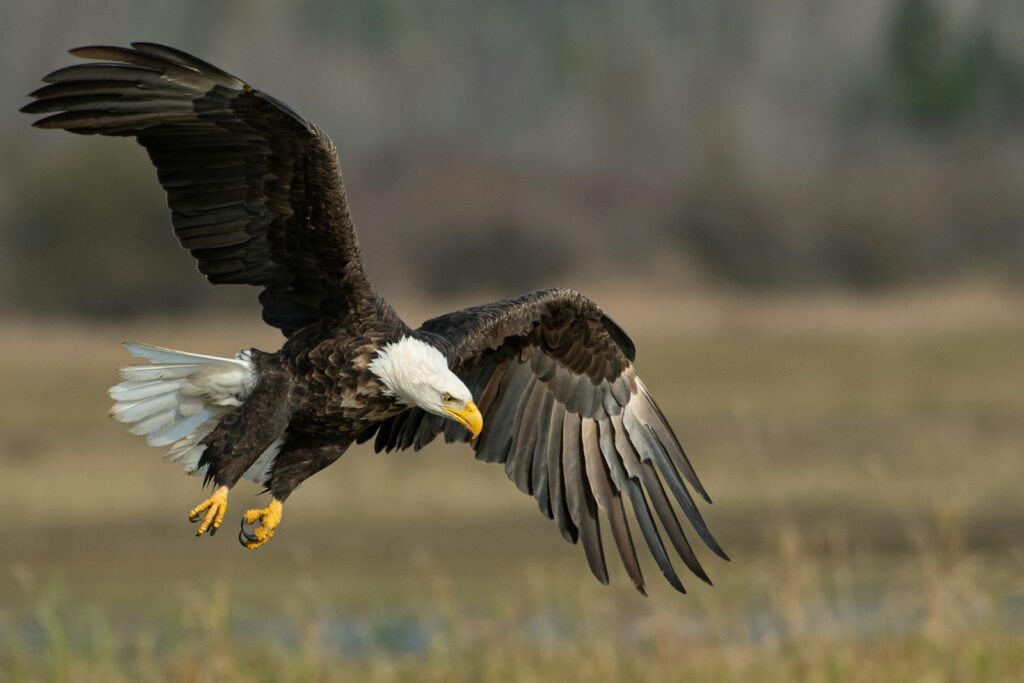
As America’s national bird, the Bald Eagle (Haliaeetus leucocephalus) embodies a perfect combination of beauty and power. With its distinctive white head contrasting against a chocolate-brown body and bright yellow beak, this raptor creates an unforgettable silhouette against the sky. Adult bald eagles develop their iconic white head and tail feathers only after reaching 4-5 years of age, starting life with an all-brown plumage that gradually transforms. They possess an impressive wingspan reaching up to 7.5 feet, allowing them to soar effortlessly on thermal currents while scanning lakes and rivers for fish. Once endangered due to DDT poisoning and habitat loss, bald eagles have made a remarkable recovery, serving as one of conservation’s greatest success stories.
The Striking Peregrine Falcon
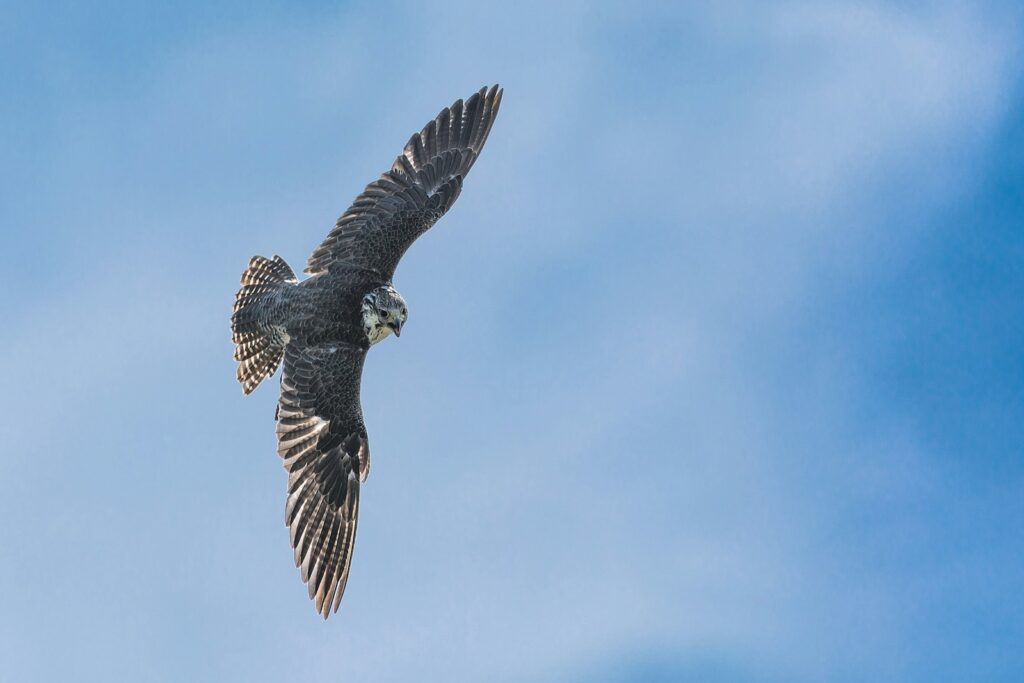
Renowned as the fastest animal on Earth, the Peregrine Falcon (Falco peregrinus) combines sleek beauty with astonishing performance. These birds feature a bluish-gray back, barred white underparts, and a distinctive black “mustache” mark that contrasts with their white cheeks. Their streamlined bodies enable their famous hunting dives, called stoops, where they can reach speeds exceeding 240 mph (386 km/h) when descending upon prey. Peregrine falcons possess remarkably acute vision, allowing them to spot small birds from distances of over a mile away. Though they faced near-extinction in many regions due to pesticide contamination in the mid-20th century, international conservation efforts have successfully restored their populations across much of their global range.
The Exotic Harpy Eagle
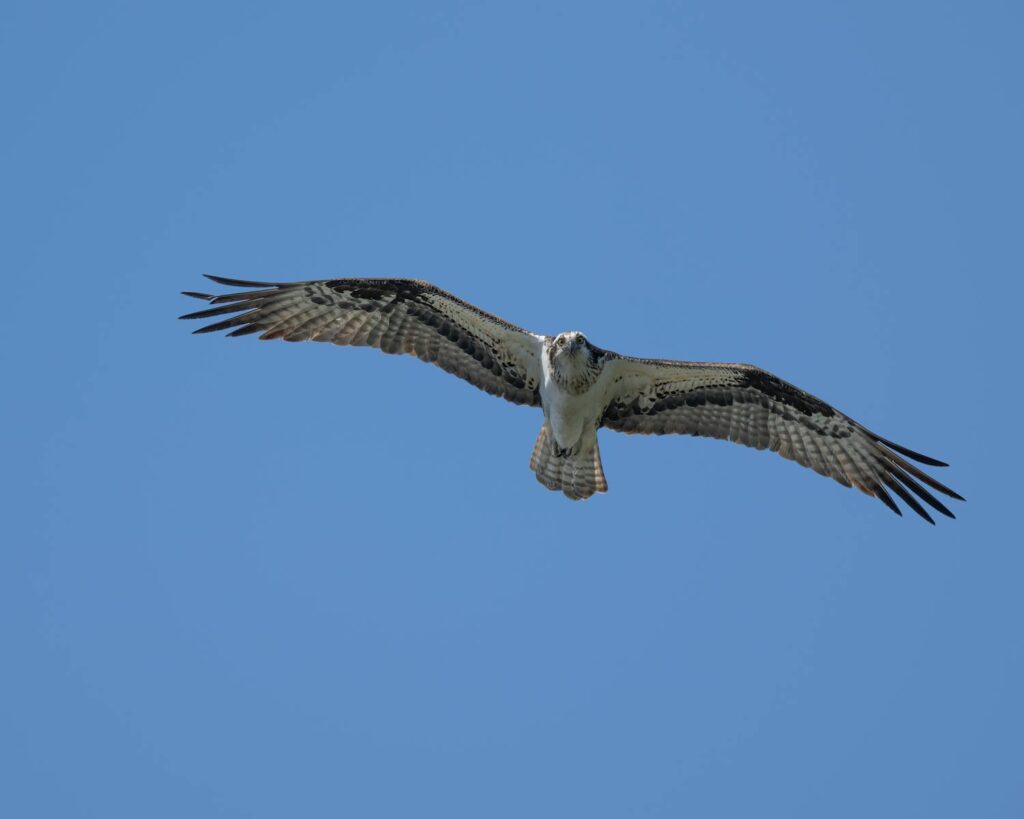
The Harpy Eagle (Harpia harpyja) of Central and South American rainforests stands as one of the most powerful and imposing birds of prey in the world. With their distinctive slate-gray back feathers, white underparts, and dramatic raised crown of feathers that fan out when excited, harpies project an almost mythological presence. Their legs can be as thick as a human wrist, ending in talons measuring 5 inches (13 cm) long—larger than a grizzly bear’s claws—capable of exerting several hundred pounds of pressure. Female harpy eagles, which are significantly larger than males, can weigh up to 20 pounds (9 kg) and prey on animals as large as monkeys and sloths, plucking them directly from tree branches. Despite their fearsome capabilities, these magnificent birds face serious threats from deforestation and habitat fragmentation throughout their range.
The Elegant Secretary Bird
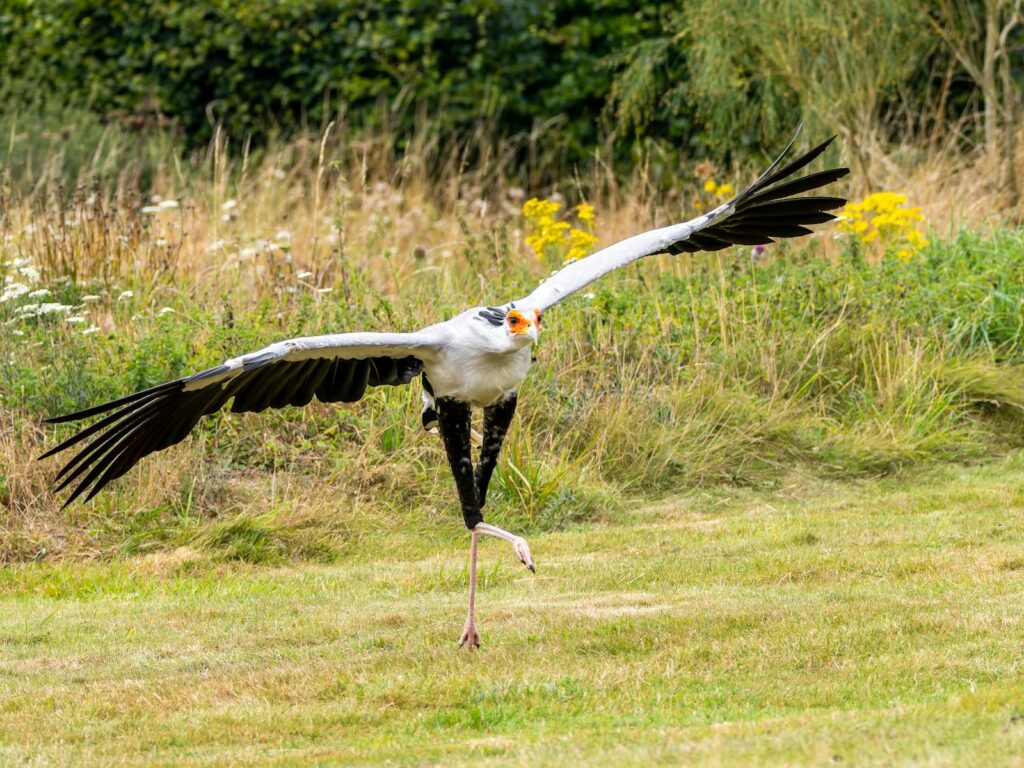
One of Africa’s most distinctive raptors, the Secretary Bird (Sagittarius serpentarius) combines elegance with deadly efficiency. Standing nearly 4 feet tall with long, crane-like legs, these birds feature predominantly gray plumage accented by black flight feathers and thighs. Their most striking feature is the crest of black feathers extending from the back of their heads, resembling quill pens that 19th-century secretaries would tuck behind their ears—hence their unusual name. Unlike most birds of prey, secretary birds hunt primarily on foot, stalking through grasslands and stomping on snakes, lizards, and small mammals with powerful, precise kicks that can deliver lethal blows. Their unique appearance and behavior have made them cultural icons across their African range, appearing on national emblems and postage stamps as symbols of strength and grace.
The Magnificent Philippine Eagle
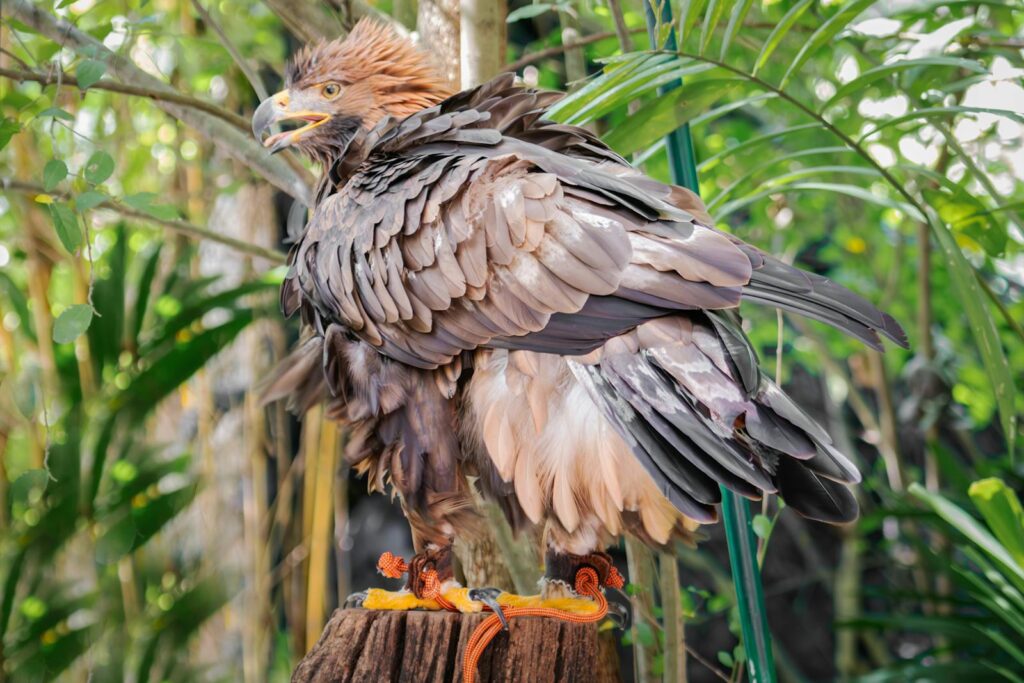
Often considered one of the most beautiful and endangered raptors, the Philippine Eagle (Pithecophaga jefferyi) commands attention with its sheer size and striking appearance. Its brown and white plumage is complemented by a dramatic mane of long, shaggy feathers that frame its face and blue-gray eyes, creating an almost lion-like appearance. With a wingspan reaching over 7 feet (2.1 meters), these eagles are among the largest and most powerful forest raptors in the world. Endemic to just four islands in the Philippines, these birds have highly specialized habitat requirements, preferring undisturbed old-growth forests where they hunt monkeys, flying lemurs, and other arboreal mammals. With fewer than 400 breeding pairs remaining in the wild, the Philippine Eagle faces extreme conservation challenges from deforestation, hunting, and climate change, serving as both a national symbol and a critical indicator of forest health.
The Colorful Ornate Hawk-Eagle
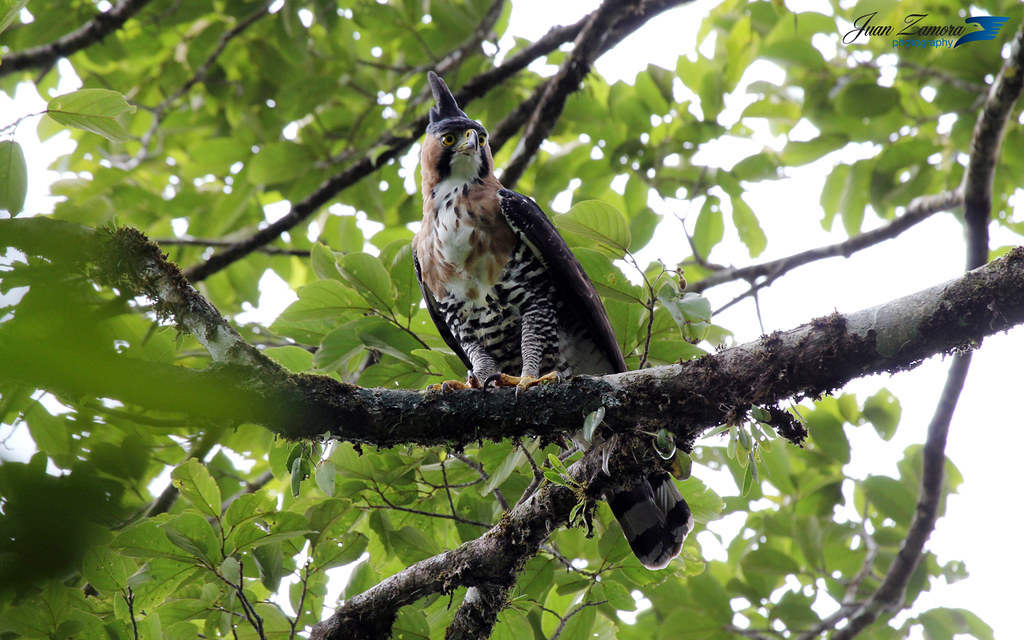
The Ornate Hawk-Eagle (Spizaetus ornatus) showcases some of the most decorative plumage among raptors, living up to its descriptive name. Its chocolate-brown back contrasts with a white chest adorned with bold black barring, while its head features a distinctive black-and-white crest that can be raised into a dramatic fan when excited or threatened. Found in the tropical forests from Mexico to Argentina, these medium-sized eagles possess remarkably strong legs and feet that allow them to take prey nearly as large as themselves, including monkeys, large birds, and iguanas. Their piercing yellow eyes and fierce hunting abilities belie their relatively small size compared to other eagles. Despite their spectacular appearance, ornate hawk-eagles remain poorly studied in the wild due to their secretive nature and the inaccessibility of their dense forest habitats.
The Snowy Owl: Arctic Beauty

Unlike most owls with their nocturnal habits, the Snowy Owl (Bubo scandiacus) hunts during daylight hours, showcasing its spectacular white plumage against the Arctic tundra. Males become increasingly white with age, while females retain more of their black barring, providing superior camouflage during nesting. Their thick feathering extends to their feet, insulating them against the harsh conditions of their circumpolar breeding grounds. Snowy owls possess exceptional hearing and vision, allowing them to detect small mammals moving beneath thick snow, which they then capture with deadly precision. These magnificent birds have gained cultural prominence through literature and film, most notably as Hedwig in the Harry Potter series, bringing attention to this species that now faces increasing threats from climate change, altering their specialized Arctic habitat.
The Jewel-Like Eurasian Hobby
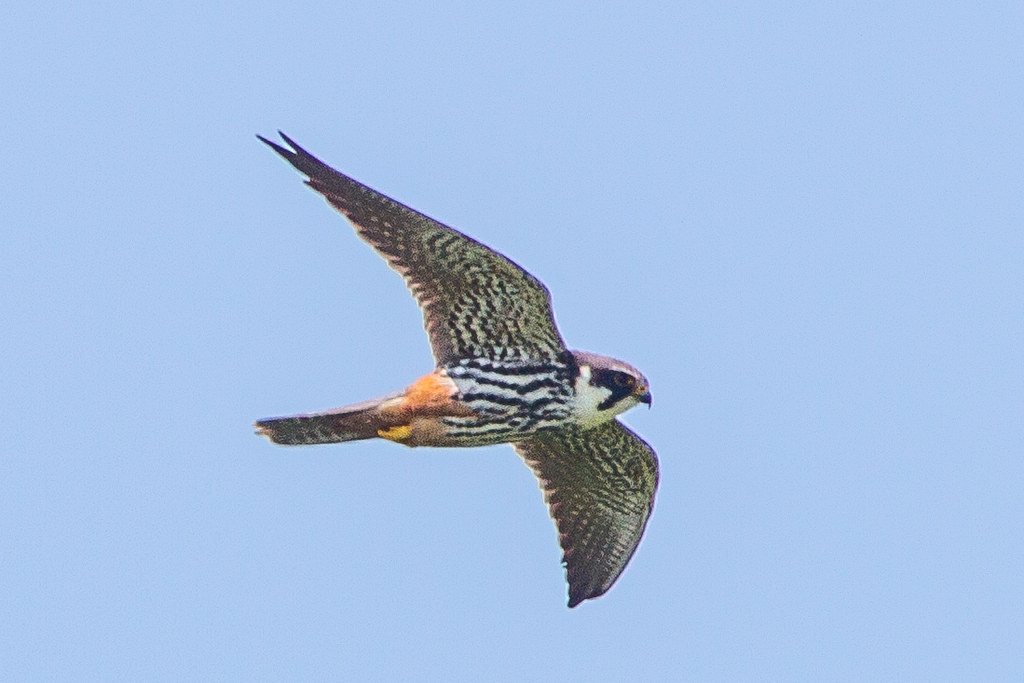
The Eurasian Hobby (Falco subbuteo) may be modest in size, but its sleek form and dramatic coloration make it one of the most attractive falcons. With slate-blue upperparts contrasting against rufous “trousers” and a white throat bordered by bold black moustachial stripes, these falcons combine speed with exquisite aesthetics. Their long, pointed wings and slim body design enable them to capture dragonflies and swallows in mid-air, displaying breathtaking aerial agility. Unlike many birds of prey that soar and glide, hobbies frequently employ rapid, powerful wingbeats that allow them to outmaneuver even swifts and swallows—some of the fastest flying birds. Migrating between Europe and Africa annually, these beautiful falcons face conservation challenges related to pesticide use and habitat loss at both ends of their migratory routes.
The Spectacular King Vulture
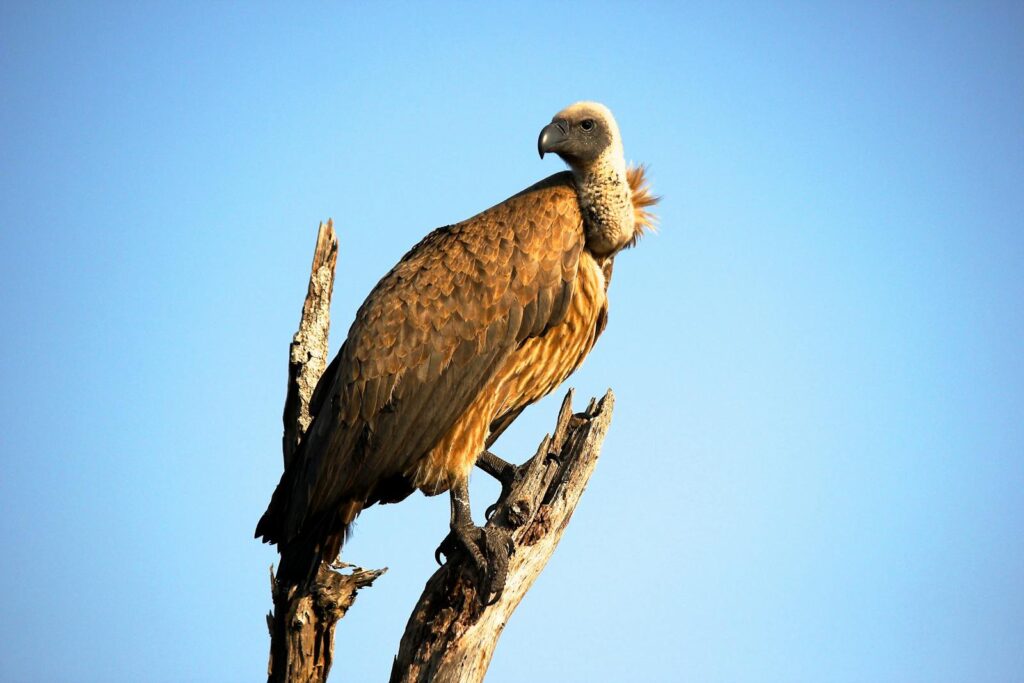
Challenging common perceptions of vultures as plain or unattractive, the King Vulture (Sarcoramphus papa) of Central and South America displays some of the most colorful and elaborate head ornamentation of any raptor. Its primarily white body and black flight feathers provide a canvas for its extraordinarily colorful bare head, which features patches of red, orange, yellow, blue, and purple skin. The fleshy orange caruncle on its beak adds to its distinctive appearance, serving as a visual signal of dominance when feeding alongside other vulture species. Despite lacking the vocal capabilities of most birds (vultures have no syrinx), king vultures communicate through hisses and grunts while maintaining complex social hierarchies at carcasses. Though traditionally considered uncharismatic, these stunning scavengers play a vital ecological role by preventing disease spread through the rapid disposal of dead animals.
The Regal Crowned Eagle
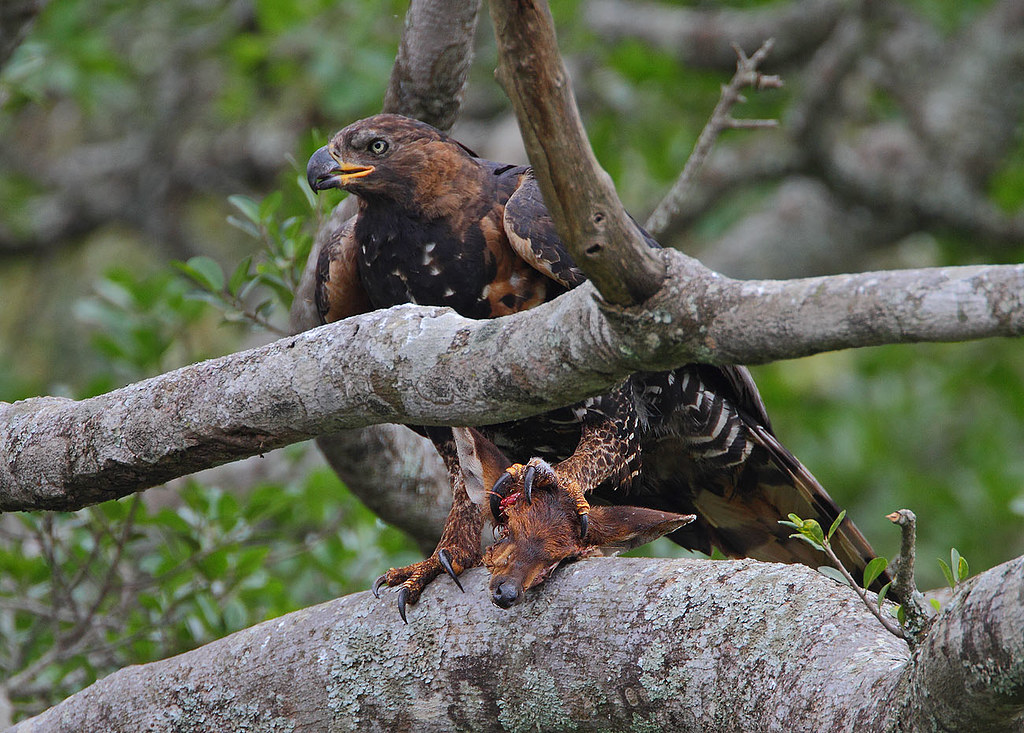
Africa’s most powerful eagle, the Crowned Eagle (Stephanoaetus coronatus), combines breathtaking beauty with remarkable hunting prowess. Its distinctive silhouette features a prominent crest of feathers that it can raise when excited, complementing its chestnut, white, and black plumage pattern. These eagles possess extraordinarily powerful legs and feet, with talons capable of exerting several hundred pounds of pressure per square inch—adaptations for their specialized diet of monkeys and antelopes. Female crowned eagles, significantly larger than males, can weigh up to 10 pounds (4.5 kg) and take prey up to four times their weight by using their momentum to knock animals from trees. Revered in many African cultures and featured in traditional artwork, these magnificent birds face increasing threats from deforestation and bushmeat hunting, depleting their prey base.
The Enchanting Gyrfalcon
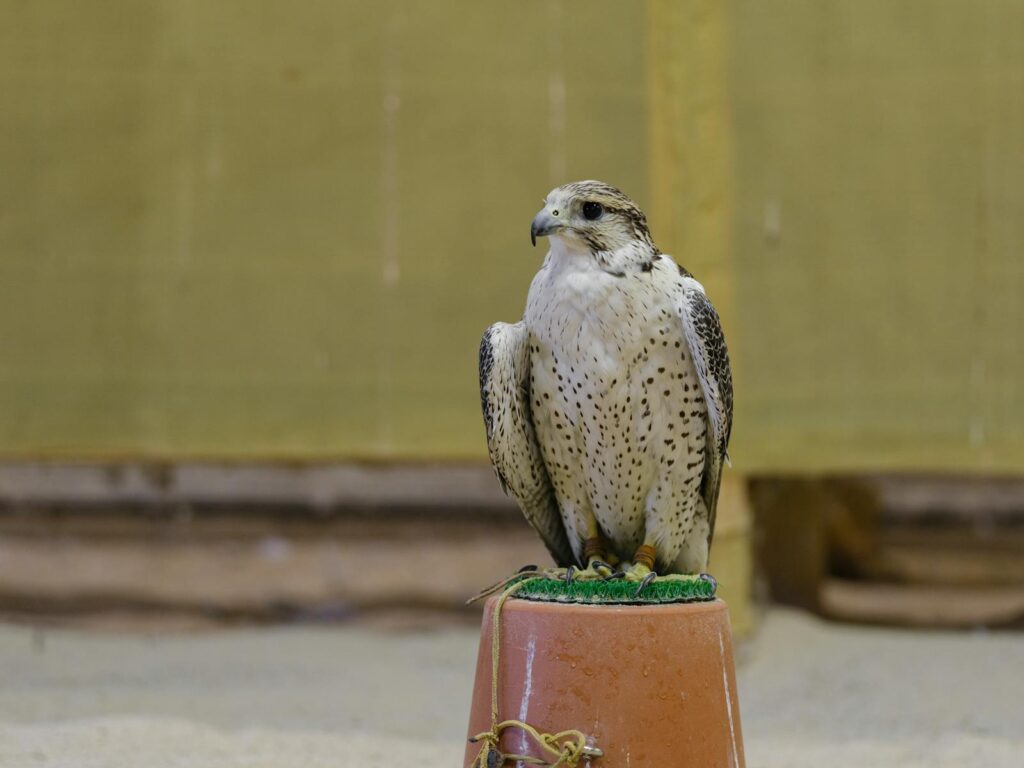
The largest of all falcon species, the Gyrfalcon (Falco rusticolus) has captivated human imagination for centuries with its unparalleled beauty and power. These arctic specialists come in three distinct color morphs—white, gray, and dark—with the white morph being especially prized historically by royal falconers for both its rarity and striking appearance. Their heavily muscled bodies and broad wings are adaptations for hunting in the harsh conditions of their circumpolar breeding range, where they pursue ptarmigan and waterfowl with astonishing speed and agility. Gyrfalcons maintain year-round territories in some of the most remote and challenging environments on Earth, from Greenland to Siberia. As climate change alters Arctic ecosystems more rapidly than temperate regions, these magnificent falcons face growing threats from shifting prey distributions and habitat alterations.
The Mysterious Bateleur Eagle
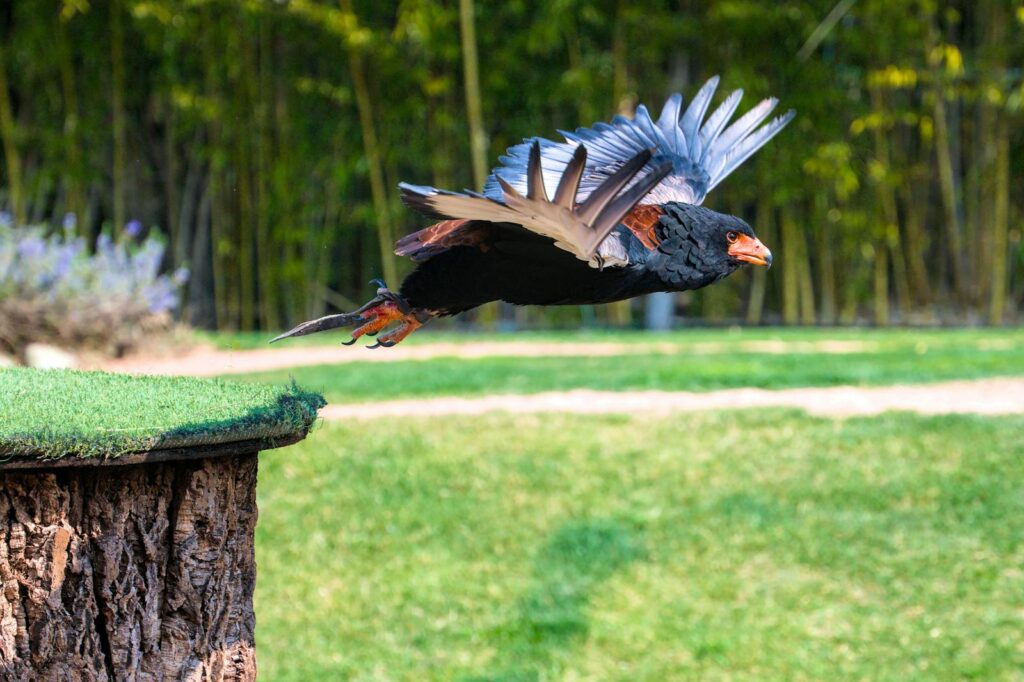
The Bateleur (Terathopius ecaudatus) presents one of the most distinctive silhouettes in African skies with its unusually short tail and long, broad wings creating an unmistakable profile. Its name derives from the French word for “street performer” or “acrobat,” referring to its spectacular aerial displays that include rock-like side-to-side tilting during flight. Adult bateleurs sport a striking color combination of black body, chestnut back, gray shoulders, red facial skin, and bright red feet, making them among the most colorful eagles. They spend more time on the wing than almost any other raptor, flying up to 300 miles daily in search of prey and carrion across the savannas of sub-Saharan Africa. Despite their widespread distribution, bateleur populations have declined dramatically over recent decades due to habitat loss, poisoning, and human persecution, leading to their classification as endangered in 2020.
The Striking Red-tailed Hawk
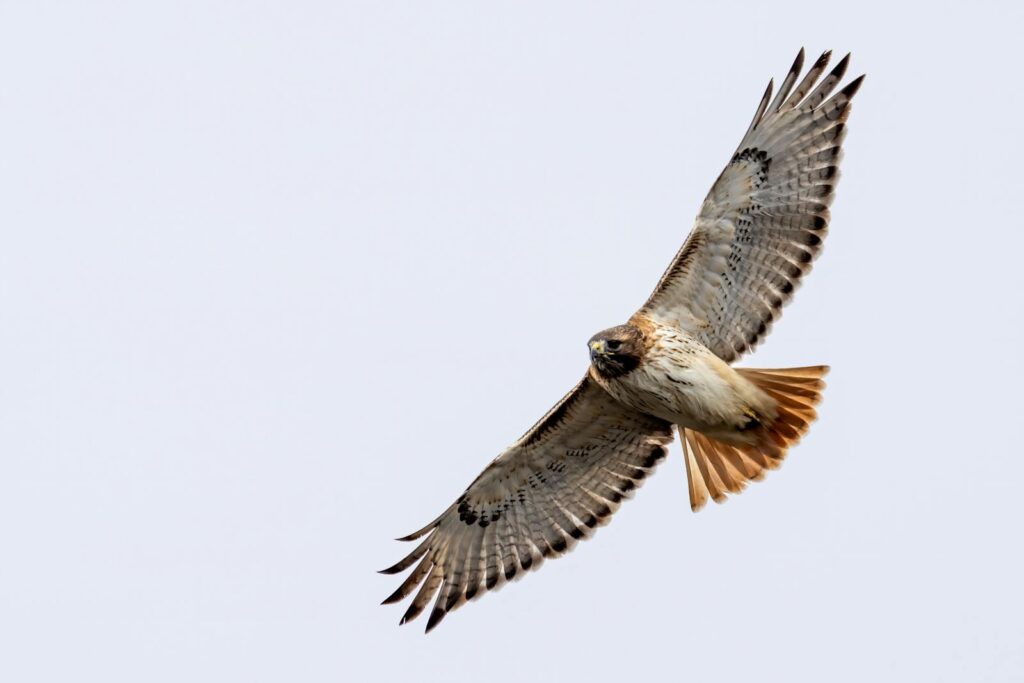
Few birds of prey are as recognizable or widely distributed across North America as the Red-tailed Hawk (Buteo jamaicensis), whose haunting cry has become the standard hawk sound in film and television. Their most distinctive feature—the rich russet tail that gives them their name—develops only in adulthood, contrasting beautifully with their typically brown and white mottled plumage. Red-tails display remarkable plumage variation across their range, with some subspecies appearing nearly black while others are predominantly light-colored, though all maintain the species’ powerful build and broad wings adapted for soaring. These adaptable raptors can be found from the Arctic to Panama, hunting in environments ranging from desert to tropical forest edges and increasingly in urban areas. Their ability to thrive alongside human development has made them important ambassadors for raptor conservation, appearing frequently in educational programs that highlight the ecological importance of birds of prey.
Conclusion
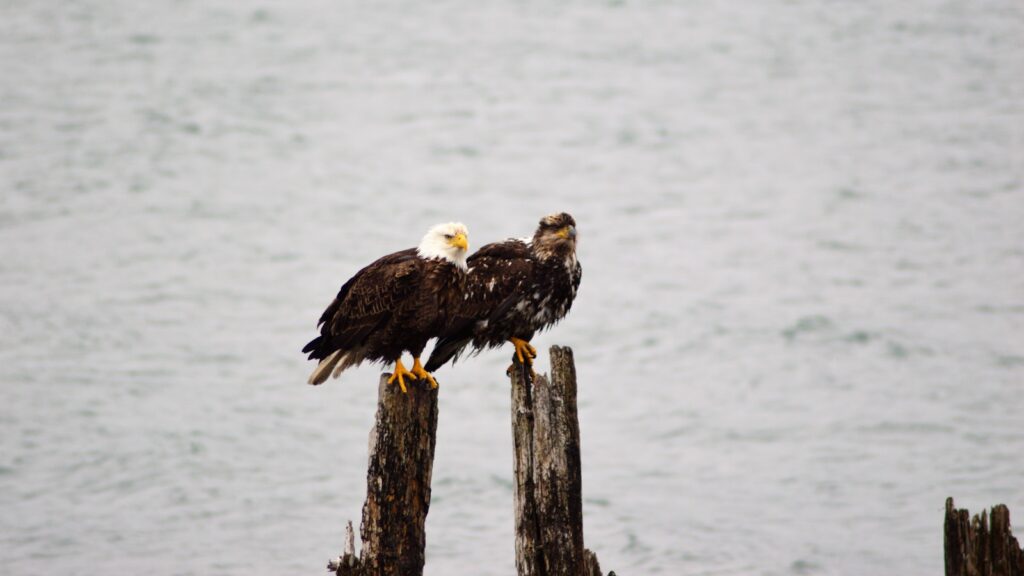
In observing these magnificent birds of prey, we gain not only an appreciation for their striking beauty but also an understanding of the delicate balance they maintain within their ecosystems. Each species represents millions of years of evolutionary refinement, resulting in the perfect combination of form and function. As climate change, habitat loss, and other human activities continue to threaten many of these spectacular raptors, conservation efforts become increasingly crucial. By protecting these apex predators, we preserve not only some of nature’s most beautiful creations but also maintain the ecological integrity of the diverse habitats they inhabit across our planet. Their continued existence serves as both inspiration and reminder of our responsibility to safeguard the natural world’s most remarkable achievements.
